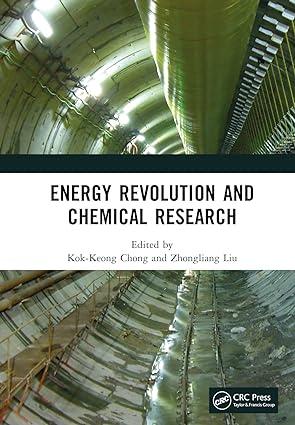Answered step by step
Verified Expert Solution
Question
1 Approved Answer
You have been transferred to a 1 , 4 - butanediol ( C 4 H 1 0 O 2 ) production plant following your recent
You have been transferred to a butanediol CHO production plant following your
recent appointment as process control engineer. One of your main responsibilities
involves process control improvement projects for a high quality of product production.
butanediol is a colorless and noncorrosive solution which is widely used as a
solvent in the industry to manufacture elastic fibers, technical plastics and
polyurethanes. Commonly, Reppe and Davy processes are the two widely used and
wellestablished alternative processes available to produce butanediol.
After a thorough study of the unit, you and your team feel certain that tighter control can
improve the yield of the product and reduce operating costs.
In your analysis, Reppe process as illustrated in FIGURE Q is studied. The raw
materials needed for Reppe process are formaldehyde CHO acetylene CH and
hydrogen H Formaldehyde and acetylene are fed into two batch reactors which
operate at bar, o
C and are arranged in parallel. Formaldehyde is reacted with
acetylene in the presence of copper, bismuth and silicon dioxide supporting catalyst to
produce butynediol as an intermediate product with a conversion rate of
Aqueous sodium hydroxide and hydrochloric acid are used to maintain the pH of the
medium in the reactor within the range of pH to The product from the batch reactors
is sent to a tank and is stored for approximately h before feeding to a distillation
column for further separation. After separation, the bottom product stream of the
distillation column is rich in butynediol and is fed to a trickling and hydrogenation
reactor for further reaction to produce butanediol as the main product with a
conversion rate of The operating condition of this reactor is o
C and bar.
Currently, standard feedback controllers are employed for controlling the key variables
in the distillation column. To convince the toplevel management on the benefits of
advanced control, it is imperative for your team to prove that enhanced control can work
on this part.
You are required to perform the following:
a Identify the key control objectives and possible disturbances for the distillation
column.
Design enhanced control strategies for energy efficiency and product purity of
the distillation column. Your design must include the appropriate schematic
diagram of the proposed control strategies, detailed justification on the selection
of the proposed control strategies, and explanation on the effectiveness of the
proposed strategy in improving energy efficiency and product purity. Cite all
references.
Step by Step Solution
There are 3 Steps involved in it
Step: 1

Get Instant Access to Expert-Tailored Solutions
See step-by-step solutions with expert insights and AI powered tools for academic success
Step: 2

Step: 3

Ace Your Homework with AI
Get the answers you need in no time with our AI-driven, step-by-step assistance
Get Started


